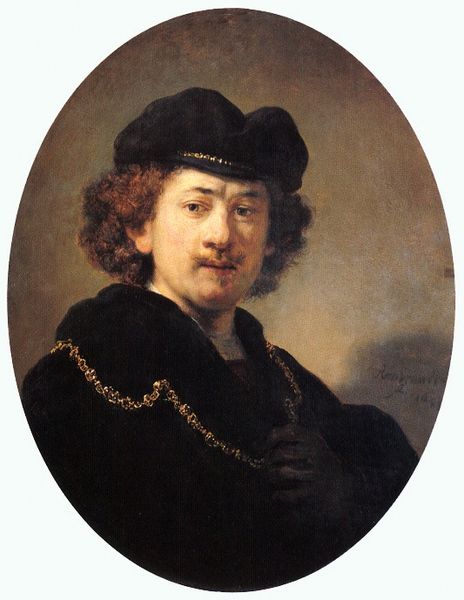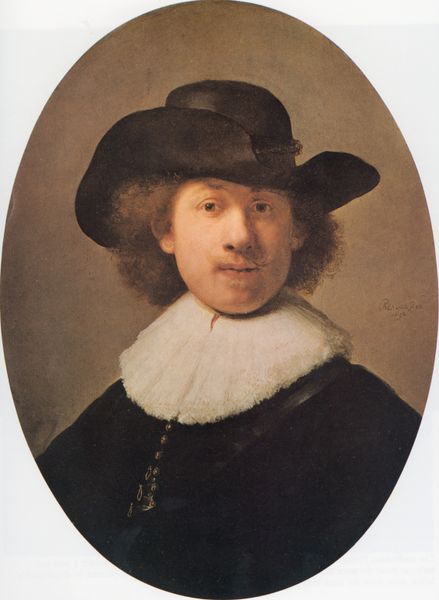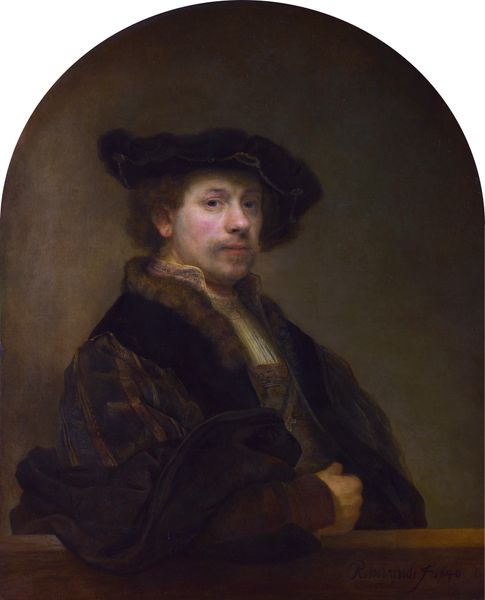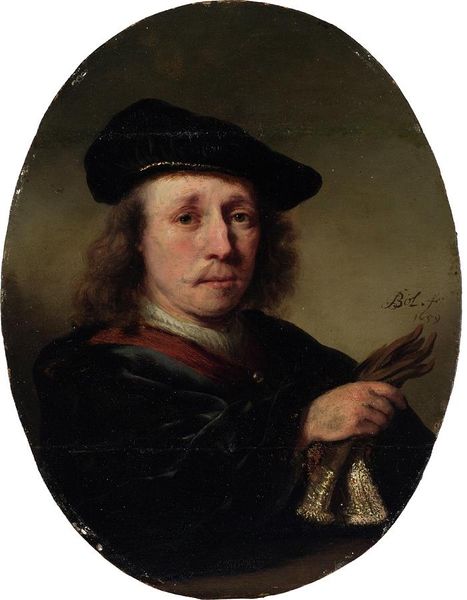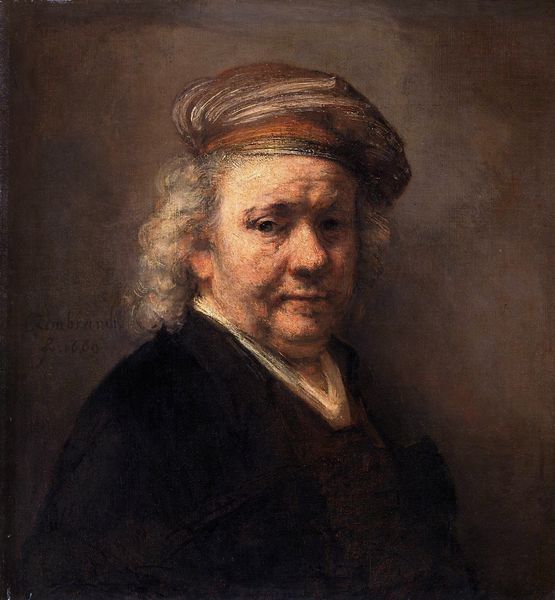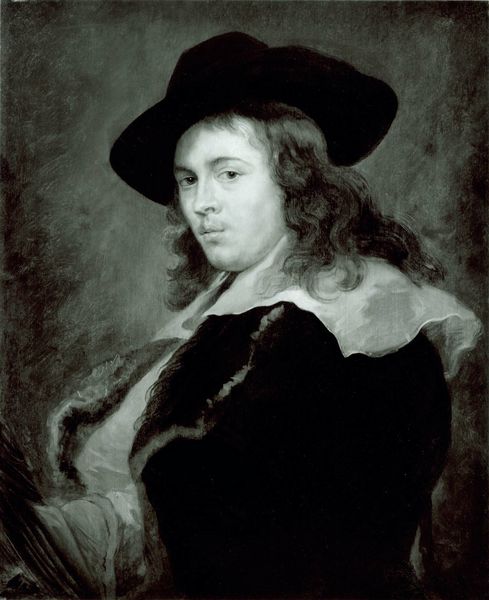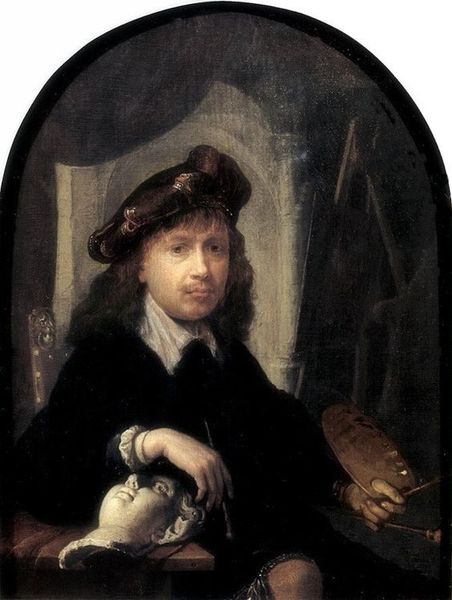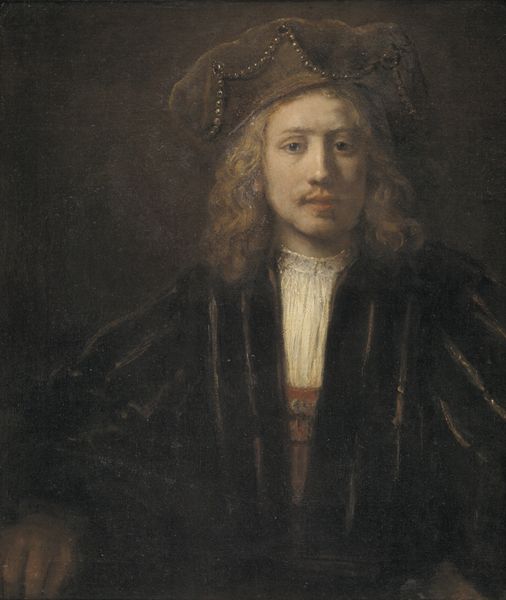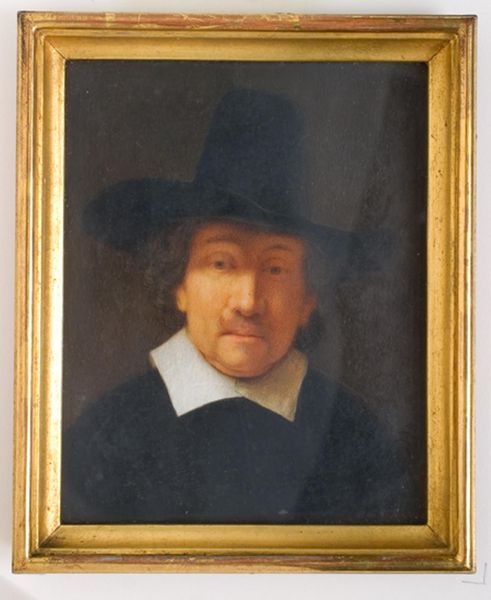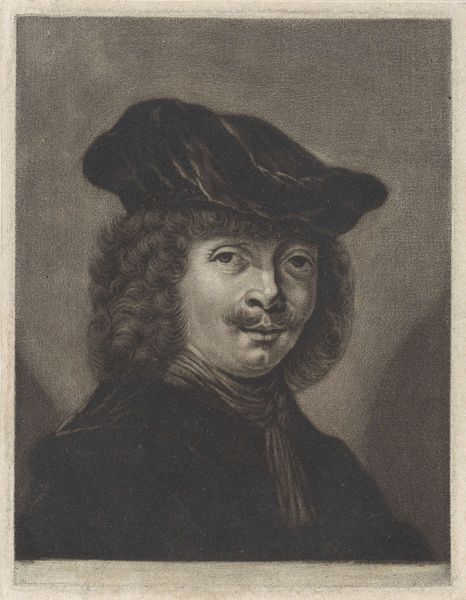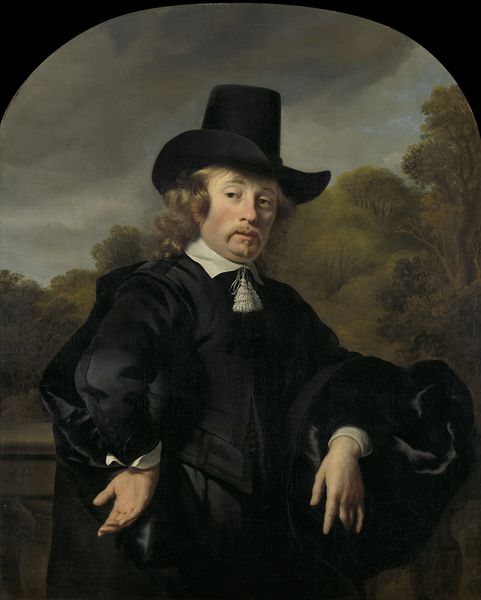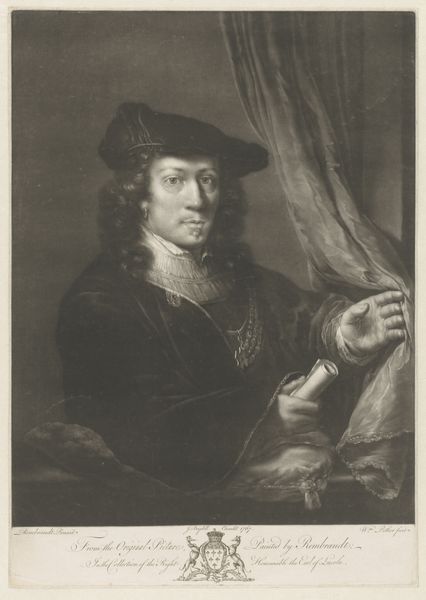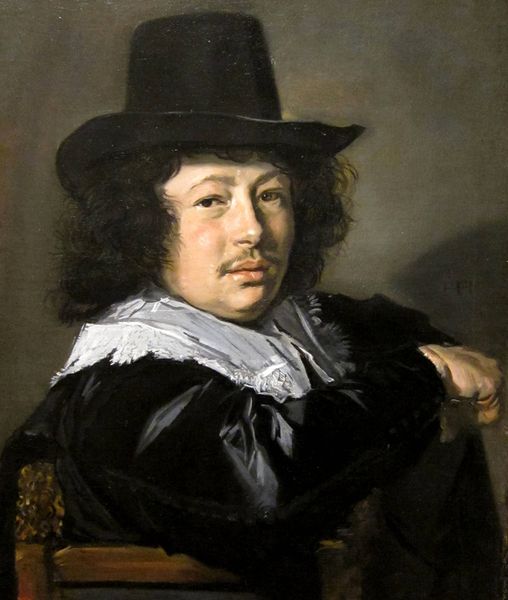
painting, oil-paint
#
self-portrait
#
baroque
#
dutch-golden-age
#
painting
#
oil-paint
#
chiaroscuro
Dimensions: 81 x 63 cm
Copyright: Public domain
Rembrandt van Rijn captured his own likeness on canvas, a somber figure adorned in the garb of his time. The dark hat and the elaborate collar speak of status, yet his gaze pierces through societal artifice. Consider how the motif of the self-portrait echoes through history. From ancient Egyptian funerary masks meant to preserve identity for eternity, to the Renaissance masters who subtly inserted their faces into biblical scenes. Each age grapples with the desire to immortalize the self. Rembrandt, here, does not merely record his features, but conveys an introspective depth, a searching within. Notice the subtle turn of the head, the play of light that emphasizes the wrinkles around his eyes—signs of time and experience. This melancholic expression suggests a profound understanding of human existence. It transcends the mere representation of a face, tapping into a collective memory of mortality and the relentless passage of time. The symbols of status are thus subverted, becoming vehicles for exploring deeper psychological truths. Like the recurring figures of classical antiquity, transmuted and reinterpreted through the ages, the self-portrait evolves, each iteration reflecting a culture's evolving understanding of identity.
Comments
No comments
Be the first to comment and join the conversation on the ultimate creative platform.
